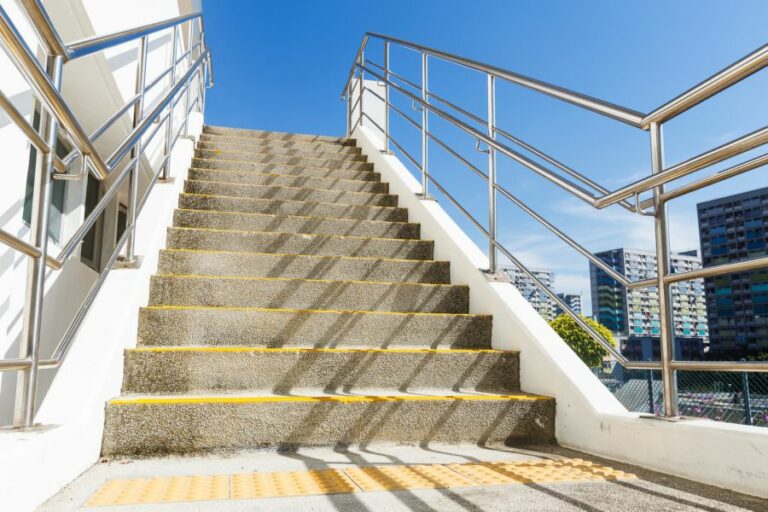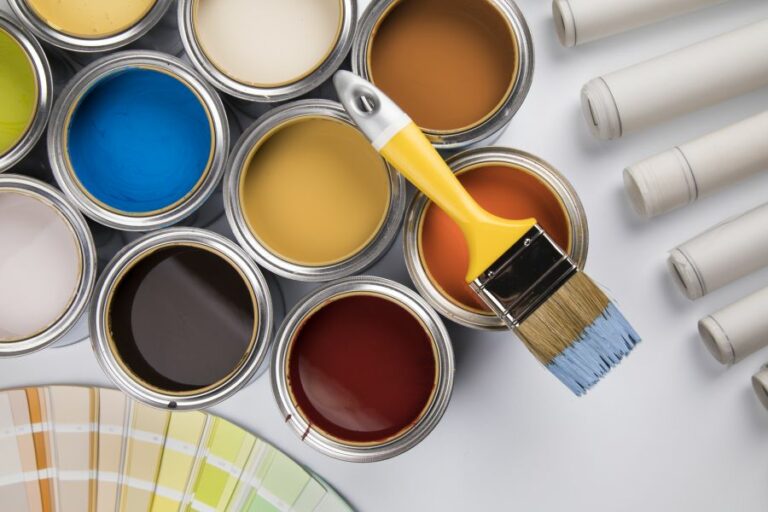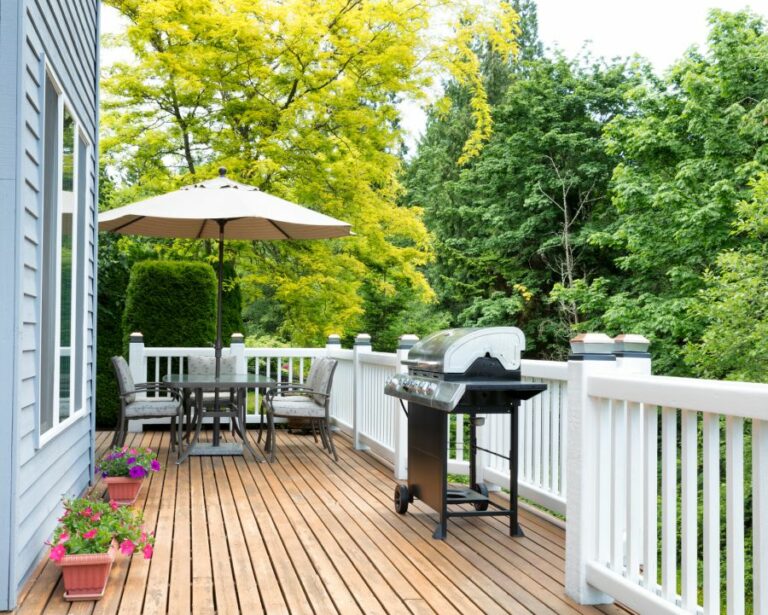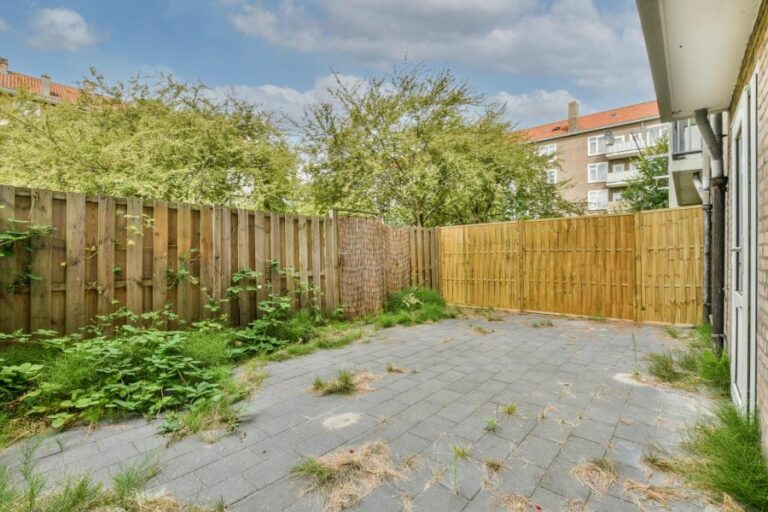Outdoor Patio Floor Paint, 25 Things You Should Know
Deciding on the perfect outdoor patio floor paint can be a game changer in achieving a stunning and inviting space for relaxation and entertainment. With so many options available in the market today, it is crucial to find the right match that combines durability, aesthetic appeal, and ease of application.
Outdoor patio floor paint:
Outdoor patio floor paint is a cost-effective solution to enhance and protect patio surfaces from weather and wear. Popular types include acrylic latex paint, epoxy paint, and concrete stain, which offer durability, UV resistance, and various aesthetic options. Proper surface preparation, paint application, and regular maintenance are essential for a long-lasting, attractive finish.

Curious about upgrading your outdoor patio area? Look no further! Dive right in to explore various options for selecting the perfect floor paint, application techniques, and how to make your patio stand out. Read on to transform your outdoor space like never before.
Contents
- 1 Exterior Patio Floor Coating Solutions
- 2 What is the Optimal Floor Paint for Exterior Concrete Surfaces?
- 3 What is the Optimal Outdoor Porch Floor Paint for a Durable and Aesthetic Finish?
- 4 What is the Process for Painting an Outdoor Patio Floor?
- 5 What is the Most Long-lasting and Durable Porch Floor Paint Available?
Exterior Patio Floor Coating Solutions
• Introduction to Patio Floor Paint
Outdoor patio floor paint is a simple and cost-effective solution to give your outdoor living space a fresh and upgraded look. Apart from enhancing your patio’s appearance, floor paint also serves as a protective layer, shielding the underlying material from adverse weather conditions and everyday wear and tear.
• Types of Outdoor Patio Floor Paint
– Acrylic Latex Paint
Acrylic latex paint is a popular choice for outdoor patio floors due to its versatility, durability, and ease of application. It is water-based, allowing for easy cleanup and low odor during application.
Acrylic latex paint also provides excellent resistance to ultraviolet (UV) rays, which helps preserve the color and integrity of the paint over time.
Some manufacturers offer specially formulated porch and floor acrylic latex paints designed to adhere well to various surfaces, including concrete, wood, and stone.
– Epoxy Paint
According to the U.S. General Services Administration, epoxy paint is a robust and highly durable option for painting your outdoor patio floor. Epoxy paint is a two-component system that consists of a resin and a hardener, which need to be mixed prior to application.
It forms an impermeable barrier, protecting the underlying surface from moisture, chemicals, and abrasion. Epoxy paint is also UV resistant and can be formulated with slip-resistant additives for improved safety.
However, it can be more challenging to apply than acrylic latex paint and typically requires additional surface preparation.
– Concrete Stain
While not technically a type of paint, concrete stain is another popular option for outdoor patio floors, especially for those who prefer a more natural appearance. Concrete stains penetrate the surface and react with the minerals in the concrete to impart color, giving the patio floor a rich, translucent finish.
They are available in both water-based and acid-based formulations, providing numerous color options and finishes. Concrete stains are UV resistant and can be sealed with a protective coating for increased durability.
• Preparing Your Patio for Painting
Proper surface preparation is crucial to achieving a successful and long-lasting paint job. Follow these steps to prepare your patio floor for painting:
- Clear your patio: Remove any furniture, planters, or other objects from your patio before beginning the painting process.
- Repair flaws and damage: Fill any cracks, holes, or gaps with an appropriate patching compound, and sand the surface smoothly if necessary.
- Clean the surface: Sweep or vacuum the patio floor to remove any loose debris, dirt, or dust. Use a pressure washer or a hose with a high-pressure nozzle to thoroughly clean the surface. Allow the surface to dry completely before proceeding.
- Prime the surface (if necessary): Depending on the paint you’re using, a primer may be required to ensure proper adhesion and durability. Consult the manufacturer’s recommendations and follow the application instructions for best results.
• Applying Outdoor Patio Floor Paint
Once your patio floor is properly prepared, it’s time to apply the paint. The following tips can help you achieve a professional-looking finish:
- Choose the right paint roller or brush: Use a high-quality roller or brush appropriate for the type of paint you’re using. This will ensure even coverage and minimize the risk of visible brushstrokes.
- Work in sections: Divide your patio into manageable sections and work on one section at a time. This will allow you to maintain a wet edge, which is crucial for preventing visible overlapping marks.
- Apply multiple thin coats: Two or three thin coats of paint will provide better coverage and durability than a single thick coat. Be sure to follow the manufacturer’s recommended drying times between coats.
- Use a slip-resistant additive: If your patio floor paint does not already contain a slip-resistant additive, consider mixing one in before application to improve safety on your patio, especially in wet conditions.
• Maintaining Your Painted Patio Floor
Proper maintenance can significantly extend the life of your painted patio floor. Here are some tips to help you keep your floor looking its best:
- Clean regularly: Sweep or vacuum your patio frequently to remove dirt and debris that can scratch or wear away at the paint.
- Avoid abrasive cleaners: When cleaning your painted patio floor, stick to gentle, non-abrasive cleaners and avoid using power washers, which could damage the paint layer.
- Address chipping or peeling: If you notice areas of chipping or peeling paint, address the issue promptly. Remove the damaged paint, patch the area if necessary, clean the surface, and apply a new coat of paint.
A well-executed and well-maintained outdoor patio floor paint job will not only enhance the beauty of your outdoor living space but will also extend the life of your patio surface.
With proper preparation, high-quality paint, and diligent maintenance, you can enjoy a beautiful and durable painted patio floor for years to come.
What is the Optimal Floor Paint for Exterior Concrete Surfaces?
Outdoor concrete surfaces require durable, long-lasting, and protective paint that can handle various weather conditions, foot traffic, and even chemical spills. With multiple options available in the market, choosing the best floor paint for outside concrete can be overwhelming.
• Types of Floor Paint for Outdoor Concrete
– Epoxy-Based Paints
Epoxy-based floor paint is a popular choice for outside concrete floors due to its durability and strong adhesive properties. Epoxy resins create a strong, hard finish that is ideal for heavy foot traffic and can resist chemicals, chipping, and abrasion.
Pros
- Provides excellent durability
- Resistant to chemicals and abrasion
- Available in various colors and finishes
Cons
- Can be more expensive than other options
- Requires proper surface preparation and regular maintenance
- May require professional installation
– Acrylic Latex Paints
Acrylic latex paint is a water-based paint that offers excellent adhesion and UV resistance. This paint is easy to clean and provides a durable, slip-resistant finish suitable for various outdoor concrete surfaces.
Pros
- Easy to apply and clean up with soap and water
- Fast-drying
- UV resistant and prevents fading
- Provides a slip-resistant finish
Cons
- May require multiple coats for optimal coverage
- Not as durable as epoxy-based paints
- May need to be resealed periodically
– Concrete Stains
Concrete stains are not traditional paints, but they provide an alternative to traditional floor paint options for outside concrete. Stains penetrate the concrete surface, creating a long-lasting and durable finish.
Stains come in various colors and can create a natural stone-like appearance, enhancing the beauty of your concrete floor.
Pros
- Creates a natural, attractive appearance
- Long-lasting and durable finish
- Low maintenance, once properly sealed
Cons
- Limited color options
- May require a sealer to protect the finish
- Surface preparation is critical for optimal results
• Factors to Consider When Choosing the Best Floor Paint
– Durability
Outdoor concrete floors require a paint that can withstand various factors such as weather conditions, sunlight exposure, and foot traffic. Epoxy-based paints provide the highest durability, followed by acrylic latex paints and concrete stains.
– Color and Finish Options
Consider the aesthetic appeal of the paint on your outdoor concrete floor. Epoxy-based paints and acrylic latex paints come in various colors and finishes, offering versatility in appearance. Concrete stains provide a more natural, stone-like appearance with limited color options.
– Application Process
Your experience, time, and budget constraints may determine the best paint option for your outdoor concrete floor. Epoxy-based paints may require professional installation, whereas acrylic latex paints and concrete stains can be applied by DIY enthusiasts.
Always follow the manufacturer’s recommendations for surface preparation and application techniques to ensure optimal results.
– Maintenance and Repair
Outdoor concrete floors may require periodic maintenance and repair, depending on the type of paint used. Epoxy-based paints are more resistant to wear and tear, while acrylic latex paints and concrete stains may need periodic resealing or touch-ups to maintain their appearance and performance.
• My Recommendation: Acrylic Latex Paint
Based on my experience, I recommend using acrylic latex paint for most outdoor concrete floor applications. It provides a balance of ease of application, durability, color, and finish options, making it suitable for various needs.
Furthermore, it is an affordable option, and DIY enthusiasts can apply it without the help of a professional.
Always read and follow the manufacturer’s instructions for surface preparation, application, and maintenance. Remember to choose a paint specifically designed for outdoor use to ensure it can withstand weather conditions and provide the desired finish.
For more information on concrete coatings, visit the Portland Cement Association’s website at www.cement.org. They offer valuable resources and guides for selecting and applying the best concrete coating for your project.
Product Name | Manufacturer | Color Options | Features |
|---|---|---|---|
Drylok E1 Concrete Floor Paint | United Gilsonite Laboratories | Multiple | High-performance, one-part epoxy paint, waterproof and resist hot-tire pick-up |
Rust-Oleum EpoxyShield Concrete Floor Paint | Rust-Oleum | Multiple | Two-part, water-based epoxy; durable protection and chemical resistance |
BEHR Premium Granite Grip Concrete Floor Paint | BEHR | Multiple | Decorative, slip-resistant concrete paint, durable, protective finish |
KILZ L377711 Exterior Concrete Floor Paint | KILZ | Multiple | Water-based paint, slip resistant, durable and protective |
What is the Optimal Outdoor Porch Floor Paint for a Durable and Aesthetic Finish?
Creating a welcoming and durable outdoor porch starts with the right floor paint. A high-quality porch floor paint provides a beautiful aesthetic and a protective layer against environmental elements such as UV rays, moisture, and foot traffic.
With numerous options on the market, choosing the perfect outdoor porch floor paint may seem challenging.
• Understanding Porch Paint Types
Before diving into specific product recommendations, it’s important to understand the different types of paint available for outdoor porch floors.
– Acrylic Latex Paint
Acrylic latex paint is a popular choice for outdoor porch floors due to its durability, flexibility, and resistance to elements such as moisture and UV rays. It’s also easy to clean and maintain, making it an ideal option for homeowners. Some examples of high-quality acrylic latex paints for outdoor porch floors include:
– Oil-Based Paint
Oil-based paints offer a high level of durability, making them suitable for outdoor porch floors exposed to heavy foot traffic or harsh environmental conditions.
They typically take longer to dry and may cause an unpleasant odor during the drying process, but the end result is a resilient and long-lasting finish. Some examples of oil-based porch floor paint options include:
– Epoxy Paint
Epoxy paint is a more durable option for outdoor porch floors, providing excellent resistance to moisture, stains, and chemicals. It’s typically thicker than other types of paint, making it suitable for filling in small cracks and imperfections on the surface.
However, epoxy paint can be more challenging to apply and may require professional assistance for optimal results. Some examples of epoxy porch floor paints include:
• Key Factors to Consider
When selecting the best outdoor porch floor paint, several factors should be taken into consideration.
– Durability
The paint should be able to withstand harsh weather conditions and foot traffic without chipping, peeling, or fading. Look for paints specifically designed for outdoor use and labeled as “porch and floor” paint, as these are formulated to provide optimum durability.
– Slip-Resistance
Safety is paramount in any outdoor space, especially for porch floors that may be exposed to rain or damp conditions. Look for paint options that offer slip resistance or add a slip-resistant additive to the paint before applying it.
– Color Retention
Choose a paint that is resistant to UV rays and fading, maintaining its color and vibrancy over time. Several manufacturers, such as Sherwin-Williams and Behr, offer paints specifically formulated for exterior use with excellent color retention properties.
– Environmental Factors
In recent years, increased focus has been placed on environmentally friendly paint options. Low-VOC (volatile organic compounds) paints and water-based or acrylic latex paints are more eco-friendly choices that emit fewer harmful chemicals during the drying process.
• Preparing the Porch Floor for Painting
For the best results, follow these steps to prepare your outdoor porch floor for painting:
- Clean the surface thoroughly to remove dirt, debris, and grease. Use a pressure washer or scrub with a solution of trisodium phosphate (TSP) and water, then rinse thoroughly.
- Allow the surface to dry completely before proceeding.
- Fill any cracks, holes, or imperfections in the surface with a suitable filler, such as wood filler for wooden porch floors or concrete patch for concrete surfaces.
- Sand the surface lightly to ensure proper adhesion of the paint.
- Apply a suitable primer if the surface is porous, such as concrete, or if the previous paint is heavily stained or damaged.
Following these steps will help ensure a smooth, even finish that will last for years to come.
• Application Tips for a Professional Finish
When painting your outdoor porch floor, keep these tips in mind for a professional-looking result:
- Use a high-quality paintbrush or roller for an even, smooth application.
- Apply at least two coats of paint, allowing ample drying time between each coat as specified by the manufacturer’s instructions.
- Paint in small sections, maintaining a wet edge to avoid lap marks.
- Avoid painting in direct sunlight or extreme temperatures, as this can affect the drying process and final appearance of the paint.
- Follow the manufacturer’s instructions for curing time before walking on the surface or placing furniture on the porch.
In conclusion, selecting the best outdoor porch floor paint requires a thorough understanding of the types of paint available and the factors that contribute to a durable, attractive finish.
By considering the options outlined in this guide and adhering to proper preparation and application techniques, you can achieve a long-lasting, beautiful outdoor porch floor that serves as a welcoming space for years to come.
Brand | Type | Finish | Durability |
|---|---|---|---|
Behr Premium | Porcelain & Patio Floor Paint | Low-Luster Enamel | Long-lasting, Weather-Resistant |
Rust-Oleum | Concrete & Garage Floor Paint | Satin | Chemical, Oil, and Gas Resistant |
KILZ | Interior/Exterior Enamel Porch & Patio Latex Floor Paint | Satin, Non-Slip | Mildew, Scuff, and Fade Resistant |
INSL-X | AFX Anti-Slip Safety Coating & Sure Step | Satin or Gloss | Skid-Resistant, Chemical and Weather Resistant |
What is the Process for Painting an Outdoor Patio Floor?
Painting an outdoor patio floor can be an excellent way to enhance the look of your outdoor space, protect your flooring, and make it easier to clean. However, painting a patio floor should be done correctly to achieve the desired results.
Here’s a step-by-step guide on how to paint an outdoor patio floor.
• Choose the Right Paint
When painting an outdoor patio floor, it’s crucial to select the right paint for the job. Outdoor-specific paints are formulated to withstand weather conditions and resist fading, chipping, and peeling.
I recommend using high-quality acrylic floor paint for concrete patios, as it is durable and UV-resistant. For wooden patio floors, choose a paint specifically designed for wood, such as an exterior-grade porch and floor paint.
Note: If your patio is made of natural stones, consult with a specialist or the manufacturer of the stones before applying paint, as some materials may not be suitable for painting.
• Prepare the Patio Floor
Although it may be tempting to start applying paint immediately, adequate surface preparation is critical for a long-lasting and professional-looking result. Ensure the following steps are taken before painting:
– Clean the Surface
Remove dirt, debris, and furniture from the patio floor. Sweep away loose material and use a pressure washer or hose to remove any stubborn dirt or stains. If your patio has existing mold or mildew, treat the area with appropriate cleaning agents beforehand.
– Repair Damage
Examine the patio floor for cracks, chips, or damaged wood. Fill any cracks with a concrete patching compound for concrete patios, following the manufacturer’s instructions. If wooden boards are damaged, replace or repair them as needed.
– Smooth the Surface
After repairs are made, sand any rough spots on the patio floor. This will help the paint adhere better to the surface and improve its overall appearance. Use fine-grit sandpaper for wood surfaces and coarse-grit sandpaper or a grinder for concrete surfaces.
– Apply Primer
A primer is essential for proper paint adhesion and durability. For concrete patios, use a concrete bonding primer to ensure the paint adheres correctly.
For wood patios, a wood-specific primer is appropriate. Allow the primer to dry according to the manufacturer’s instructions before moving on to painting.
• Paint the Patio Floor
Now that the surface is prepped, it’s time to paint the outdoor patio floor. Remember to choose a day with good weather conditions, as temperature and humidity can affect the paint’s performance.
– Select the Right Tools
Use a paint roller with an extension handle to cover large areas and a paintbrush for detailed or hard-to-reach spaces. Make sure to select roller covers and brushes designed for the specific type of paint you are using.
– Apply the First Coat
Start by applying a thin, even coat of paint on the patio floor, working in manageable sections. Remember to paint in the same direction throughout the project for a consistent appearance.
Tip: If you are painting a pattern, use painter’s tape to create clean lines and borders.
– Apply Additional Coats
Follow the manufacturer’s instructions on drying time between coats. In general, most paints require at least 24 hours for drying. Apply a second coat in the same manner as the first, ensuring full coverage and even application.
Note: A third coat may be necessary, depending on the color and base material of your patio floor.
• Final Steps
After applying the final coat, allow the paint to dry completely before walking or placing furniture on the patio. Drying times can vary; however, it’s advisable to wait at least 48 hours before using the patio. Once the paint is fully dried, you may return your furniture and decorations to the outdoor space.
In conclusion, painting an outdoor patio floor is a project that requires proper preparation, high-quality paint, and patience in applying each coat. With these steps in mind, you can successfully transform the appearance of your patio floor and prolong its lifespan.
Step | Description |
|---|---|
1 | Clean the patio floor |
2 | Repair any cracks or gaps in the patio floor |
3 | Prepare the surface by etching, if necessary |
4 | Apply a primer, if needed |
5 | Choose the right paint for the patio floor (such as an epoxy-based paint or a latex paint) |
6 | Apply the first coat of paint and let it dry |
7 | Apply a second coat of paint, if necessary |
8 | Let the paint fully cure before using the patio |
What is the Most Long-lasting and Durable Porch Floor Paint Available?
A porch is a significant part of many homes, providing both aesthetic and functional benefits. However, due to constant exposure to the elements, the flooring of a porch must be carefully considered to ensure longevity, performance, and appearance.
When it comes to porch flooring, one crucial aspect is choosing the right paint to provide maximum durability, aesthetics, and protection.
• Acrylic Latex Porch and Floor Paint
One of the most durable choices for porch floor paint is acrylic latex. This type of paint provides an excellent balance of durability, cost-effectiveness, and ease of application. Acrylic latex paint is well-suited to outdoor applications, as it is resistant to fading, mildew, and moisture.
Additionally, it has excellent adhesion capabilities, making it an ideal choice for various porch floor materials, including wood, concrete, and more.
Expert Recommendation: Based on my experience, the top choice for acrylic latex porch and floor paint is Behr Premium Porch & Patio Floor Paint due to its advanced acrylic latex formula, which provides exceptional durability, resistance to weathering, and long-lasting color retention.
• Epoxy Porch Floor Coating
Epoxy coatings are another popular option for porch floors, known for their exceptional durability and ability to withstand heavy foot traffic, as well as resistance against chemicals, stains, and abrasions.
An epoxy coating typically consists of a two-component system: a resin and a hardener, which, when mixed, create a tough, long-lasting surface that bonds well to various porch floor materials.
Expert Recommendation: I recommend the Rust-Oleum EPOXYSHIELD Concrete Floor Paint, which provides excellent adhesion, durability, and resistance to chemicals and wear.
• Polyurethane Porch Floor Paint
Polyurethane paints offer another durable and long-lasting option for porch flooring. This type of paint creates a high-gloss finish that is resistant to scratches, scuffs, and stains, making it an excellent choice for high-traffic areas.
It also has excellent UV resistance, which helps to prevent color fading due to sun exposure. Polyurethane porch floor paint is well-suited for wood, concrete, and masonry surfaces.
Expert Recommendation: I suggest considering Minwax Helmsman Spar Urethane for a high-quality, durable polyurethane finish. This product offers excellent protection against water, UV rays, and weather conditions, ensuring a long-lasting and attractive porch floor.
• Oil-Based Porch and Floor Paint
Oil-based paints are another option for porch floor paint, offering a number of benefits, including excellent adhesion and penetration, which can provide a more uniform and longer-lasting finish compared to other types of paint.
Due to their slow-drying nature, oil-based paints are also known to provide a smoother, more self-leveling finish.
However, oil-based porch floor paints are generally less environmentally friendly than water-based options, and they may be more challenging to apply and clean up. Additionally, oil-based paints may be less resistant to UV rays, leading to reduced color retention and an increased risk of fading over time.
Expert Recommendation: A reliable oil-based porch and floor paint option is Valspar High-Gloss Enamel Oil-based Porch & Floor Paint which offers a high-gloss finish, excellent durability, and is suitable for use on wood and concrete surfaces.
• Selecting the Most Durable Porch Floor Paint: Factors to Consider
When choosing the most durable porch floor paint, several factors should be considered, including:
- Material Compatibility: Consider the type of flooring material on your porch, as different paints may perform better or worse depending on the surface (e.g., wood, concrete, masonry).
- Climate and Exposure: Evaluate the local climate and the specific exposure levels experienced by your porch (e.g., sun, rain, snow) to select a paint that will perform well under these conditions.
- Foot Traffic: Consider the level of foot traffic your porch receives, as certain paints may be better suited for high-traffic areas and can provide greater durability and wear resistance.
- Maintenance Requirements: Assess the level of ongoing maintenance you are willing to undertake, as some types of porch floor paints may require more frequent reapplication or upkeep.
• In Conclusion
In summary, the most durable porch floor paint options include acrylic latex, epoxy coatings, polyurethane, and oil-based paints. Carefully considering the factors outlined above will help you make an informed decision regarding the best paint for your specific porch flooring needs.
Ultimately, the key to a long-lasting and beautiful porch floor lies in selecting the appropriate paint type, combined with proper surface preparation, application techniques, and regular maintenance.







